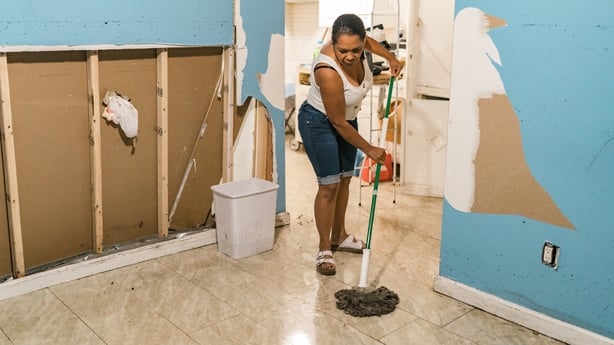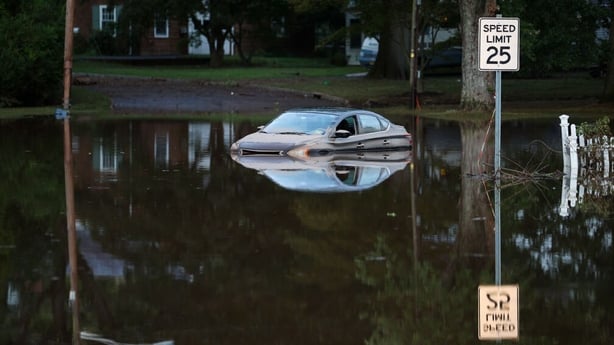US media reported that torrential rains, floods and hurricanes caused by the remnants of Hurricane Ida killed at least 65 people across the United States.
Hurricane Ida also caused damage to apartment buildings, and cut off water and electricity.
Ida dumped rain at sometimes unprecedented rates Wednesday night into the area, causing floods that swarmed into subway stations and inundated homes and vehicles on highways.
Parts of New Jersey are still recovering from the impact of Ida. Earlier, New Jersey Governor Phil Murphy said the state is not yet out of the woods, and his biggest concerns lie in the additional response to still-high water levels and damage from Ida.
Infrastructure and apartment buildings were devastated in parts of New Jersey, with some residents saying their neighborhoods were almost completely destroyed.
New York State was also one of the hardest-hit states by Ida, with torrential rains inundating many parts of the city and inundating low-lying areas.
At least 11 people, mostly immigrants and people from low-income groups, were killed when floodwaters submerged basement apartments in New York City.

The situation in Louisiana also remains bleak. Statistics showed that more than a million households in the state suffered from power outages, and the daily water supply for 600,000 people was affected.
In addition, some Louisiana nursing homes were reported to have failed to evacuate residents in time, and staff had disappeared before the storm, leaving some elderly residents waiting for help without water or electricity.
At least six nursing home residents have died after being evacuated, and their deaths are still under investigation, according to local media.
Storm Ida landed on August 29, the 16th anniversary of the devastating blow of Hurricane Katrina, linked to Hurricane Laura in 2020 and the last island hurricane in 1856 as the strongest hurricane to ever hit Louisiana. The classification was downgraded to tropical depression last Monday afternoon and moved inland with heavy rain.
Many Americans expressed strong dissatisfaction and anger at the government’s poor response to the storm. Some accused the government of being slow to respond and of not having an effective contingency plan. Others believe that some lives could have been saved if the government had declared a state of emergency earlier.
Analysts believe that Ida’s massive loss of property and life shows that aging public infrastructure in New York and elsewhere is in dire need of improvement.

New York City’s infrastructures have not been able to keep pace with population growth over the past few decades, not to mention increasingly violent storms and sea level, said Jonathan Balls, executive director of the Center for the Urban Future, a public policy think tank. rising from climate change.
Nicole Gilinas, an urban economist at the Manhattan Institute, said New York City’s infrastructures couldn’t handle the tens of centimeters of precipitation dumped in just a few hours. She added that periods of heavy rainfall for short periods can clog sewers, and there are not enough green spaces to help absorb them.
«So, some of these roads become conduits when there’s a big storm,» Gilinas said.
Officials in New York and New Jersey acknowledged Friday that state governments need to improve infrastructure and prepare better for extreme weather events.
New York Governor Cathy Hochhol said the loss of life from Ida highlighted weaknesses in the state’s disaster notification system, including the lack of notifications in different languages.
New York City Mayor Bill de Blasio has announced a series of initiatives to tackle extreme weather events, including more stringent travel bans, measures to guide residents off the streets before a storm and evacuate people living in vulnerable places such as basement apartments.
New Jersey Governor Phil Murphy also acknowledged that the state has a lot of work to do to adapt to climate change.

«Lector profesional. Jugador galardonado. Aficionado a los zombis. Adicto a las redes sociales. Experto en tocino. Erudito en Internet»